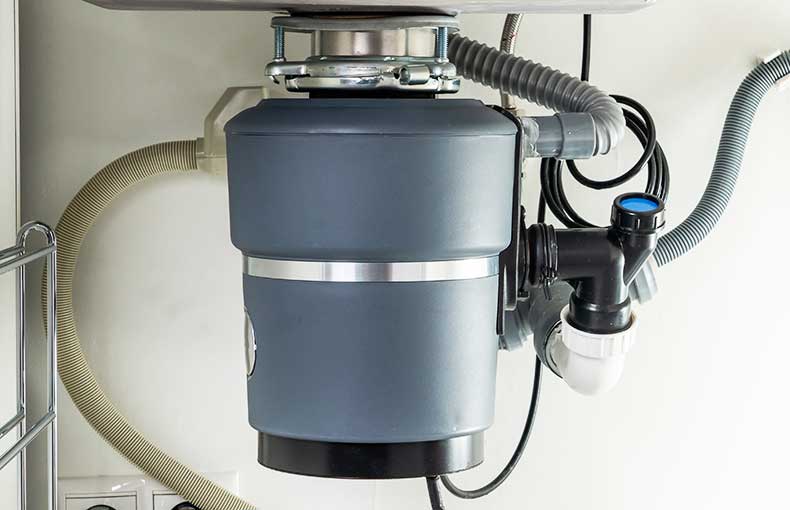In this article down the page you can locate some really good tips related to Why Is .

Garbage disposals are crucial kitchen devices that assist in disposing of food waste efficiently. However, a dripping waste disposal unit can be an aggravating and untidy issue to handle. Thankfully, many leakages can be fixed conveniently with a few simple actions. In this post, we will talk about just how to repair a dripping waste disposal unit effectively.
Intro
Garbage disposals are mounted under kitchen sinks and are created to shred food waste right into smaller sized pieces, enabling it to travel through the pipes system conveniently. While these devices are typically trustworthy, leakages can take place in time because of damage, loosened links, or damage to the system.
Common Causes of Leaks in Waste Disposals
Worn Seals and Gaskets
Seals and gaskets play a vital role in preventing water from leaking out of the garbage disposal. In time, these parts can deteriorate, bring about leaks around the disposal unit.
Loose Links
The connections between the waste disposal unit and the pipes system can become loosened with time, causing water to leak out throughout procedure.
Cracks or Holes in the Disposal Unit
Physical damage to the garbage disposal, such as fractures or holes in the real estate, can additionally result in leaks.
Identifying the Source of the Leak
Prior to attempting to repair a leaking garbage disposal, it is vital to identify the source of the leak. This can normally be done via aesthetic examination or by performing simple tests.
Visual Inspection
Inspect the garbage disposal unit carefully for any indications of water leakage. Pay very close attention to areas around seals, gaskets, and connection factors.
Checking for Leaks
One way to examine for leaks is by running water through the disposal device and looking for any kind of noticeable indications of leak.
Devices and Products Needed for Taking Care Of a Dripping Garbage Disposal
Prior to starting the fixing procedure, collect the essential devices and products, including a screwdriver, adjustable wrench, plumber's putty, substitute seals or gaskets, and epoxy or patching product for fixing cracks or openings.
Step-by-Step Guide to Fixing a Dripping Garbage Disposal
Switch off the Power
Before trying any fixings, ensure that the power to the waste disposal unit unit is shut off to prevent the danger of electric shock.
Locate the Leakage
Recognize the exact place of the leak and figure out the cause.
Tighten Links
Utilize a wrench to tighten up any loose connections in between the disposal unit and the plumbing system.
Change Seals or Gaskets
If the leak results from worn seals or gaskets, eliminate the old components and change them with new ones.
Patching Fractures or Openings
For cracks or openings in the disposal device, usage epoxy or a suitable patching product to secure the broken area.
Checking the Waste Disposal Unit After Repair Work
When the repair service is full, examine the waste disposal unit by running water via it to make certain that the leakage has been fixed.
Preventive Maintenance Tips to Avoid Future Leaks
To stop future leakages, it is important to do regular maintenance on your waste disposal unit. This includes keeping it clean, preventing placing non-food items or difficult things down the disposal, and regularly checking for leakages or various other issues.
Verdict
In conclusion, dealing with a dripping waste disposal unit is a fairly straightforward procedure that can be completed with fundamental devices and products. By complying with the steps described in this article and practicing preventive maintenance, you can maintain your garbage disposal in good working problem and prevent pricey fixings in the future.
What to Do About a Leaking Garbage Disposal
A leaking garbage disposal often goes unnoticed until you confront a sopping cabinet, a foul-smelling puddle, or an audible drip-drip-drip from the unit. The fix can be frustrating, too, because the leak can stem from a number of components in the system. Fortunately, with a little sleuthing, you can zero in on the leak and—depending on the exact location—stop the icky oozing and repair the component that caused it. Worst case scenario, if it turns out that the garbage disposal must be replaced, installing a new one is a reasonable do-it-yourself task for those with basic plumbing skills. Read on to keep the cash you’d otherwise hand over to a pro.
Prepare to find the leak
Prior to testing the garbage disposal for leaks, unplug it at the wall outlet and turn off the power from the breaker box to prevent electrical shock. Then insert a watertight sink stopper into your sink drain and wipe the unit dry with a clean cloth. In any handy container, mix a few drops of food coloring into a few cups of water, and pour the dyed water onto the sink stopper to help you locate the leak.
Investigate the source
the top, where the disposal meets the sink drain the side, where the dishwasher hose or main drain pipe connects to the disposal or the bottom of the unit Inspect each of these locations while gliding a light-colored rag over the unit; the dyed water will readily show on the rag and reveal the location of the leak. If a leak isn’t immediately apparent, remove the sink stopper and pour a few more cups of dyed water down the sink drain, then check for leaks again. Leaks near the top of the unit are more likely to show themselves while the sink is plugged, while side and bottom leaks are more noticeable while the sink is unplugged.
The metal sink flange that sits directly inside the sink drain is typically sealed around the top with plumber’s putty (a clay-like sealant) and then secured from under the sink with bolts. If the plumber’s putty deteriorates, or the bolts loosen, the flange can no longer form a watertight seal between the sink drain and the disposal—which could cause a leak at the top of the unit.
To reseal the leaky flange, you must first detach the garbage disposal. Start by loosening the screws securing the main drain pipe to the disposal, then loosen the screws in the metal clamp securing the dishwasher hose to the disposal and detach the drain pipe and dishwasher hose from the disposal. Loosen the screws in the mounting ring that connects the disposal to the metal mounting assembly beneath the sink, then pull down the disposal and carefully set it on a clean, dry surface. Loosen the bolts in the mounting assembly with a wrench, then pull down the mounting assembly and set it near the disposal.

We were shown that editorial on Tips on Fixing a Leaking Garbage Disposal through an acquaintance on a different domain. Are you aware of somebody who is fascinated with the subject? Feel free to promote it. I cherish reading our article about Tips on Fixing a Leaking Garbage Disposal.
Schedule Estimate